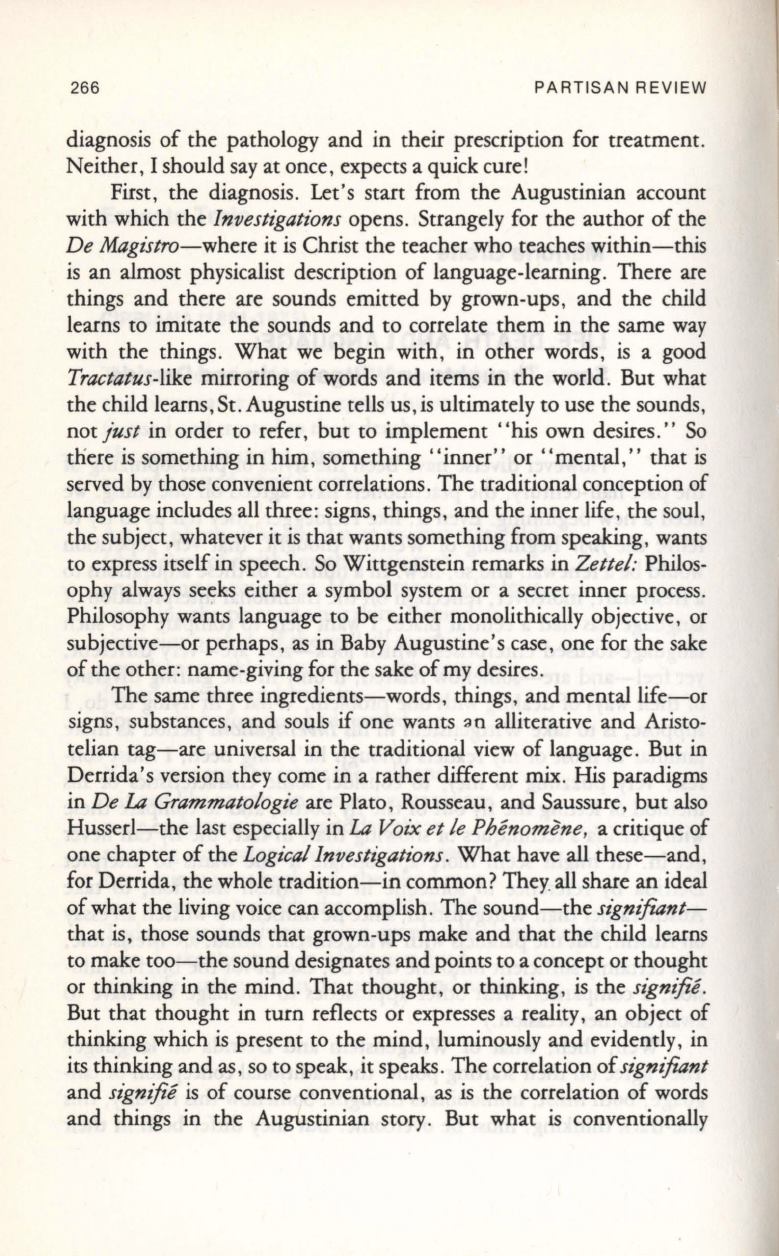
266
PARTISAN REVIEW
diagnosis of the pathology and in their prescription for treatment.
Neither, I should say at once, expects a quick cure!
First , the diagnosis . Let's start from the Augustinian account
with which the
Investigations
opens. Strangely for the author of the
De Magzstro-where
it is Christ the teacher who teaches within-this
is an almost physicalist description of language-learning. There are
things and there are sounds emitted by grown-ups , and the child
learns to imitate the sounds and to correlate them in the same way
with the things . What we begin with, in other words, is a good
Tractatus-like
mirroring of words and items in the world. But what
the child learns , St. Augustine tells us, is ultimately to use the sounds,
not
just
in order to refer, but to implement "his own desires." So
there is something in him, something " inner" or "mental, " that is
served by those convenient correlations. The traditional conception of
language includes all three: signs, things, and the inner life, the soul,
the subject, whatever it
is
that wants something from speaking, wants
to express itself in speech. So Wittgenstein remarks in
Zettel:
Philos–
ophy always seeks either a symbol system or a secret inner process.
Philosophy
wa~ts
language to be either monolithically objective , or
subjective-or perhaps, as in Baby Augustine's case, one for the sake
of the other: name-giving for the sake of my desires.
The same three ingredients-words, things , and mental life-or
signs, substances, and souls if one wants :In alliterative and Aristo–
telian tag-are universal in the traditional view of language. But in
Derrida's version they come in a rather different mix. His paradigms
in
De
La
Grammatologie
are Plato , Rousseau, and Saussure , but also
Husserl-the last especially in
La
Voix et Ie Phenomene,
a critique of
one chapter of the
Logical Investigations .
What have all these-and,
for Derrida, the whole tradition-in common? They.all share an ideal
of what the living voice can accomplish. The sound-the
signijiant–
that is, those sounds that grown-ups make and that the child learns
to make too-the sound designates and points to a concept or thought
or thinking in the mind. That thought, or thinking, is the
signijie.
But that thought in turn reflects or expresses a reality, an object of
thinking which is present to the mind, luminously and evidently, in
its thinking and as, so to speak, it speaks . The correlation of
signijiant
and
signijie
is of course conventional , as is the correlation of words
and things in the Augustinian story . But what is conventionally


